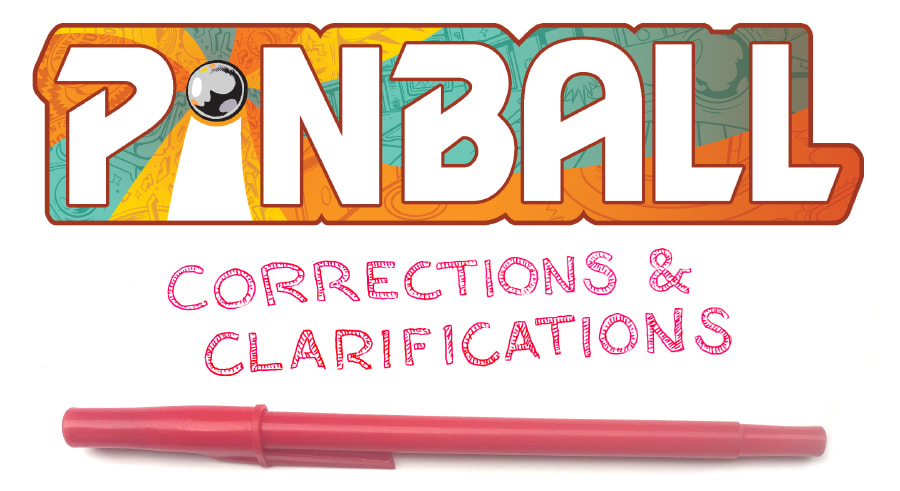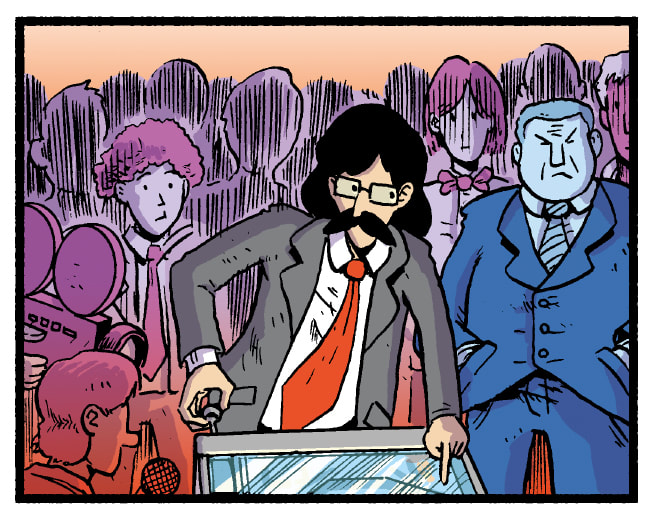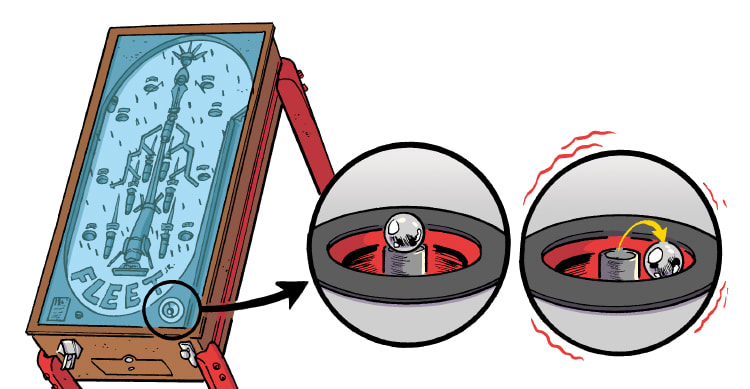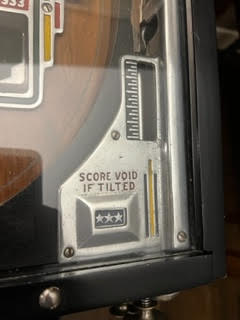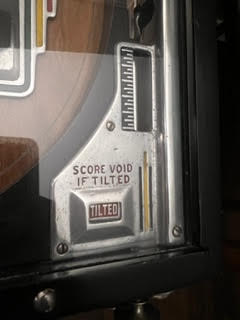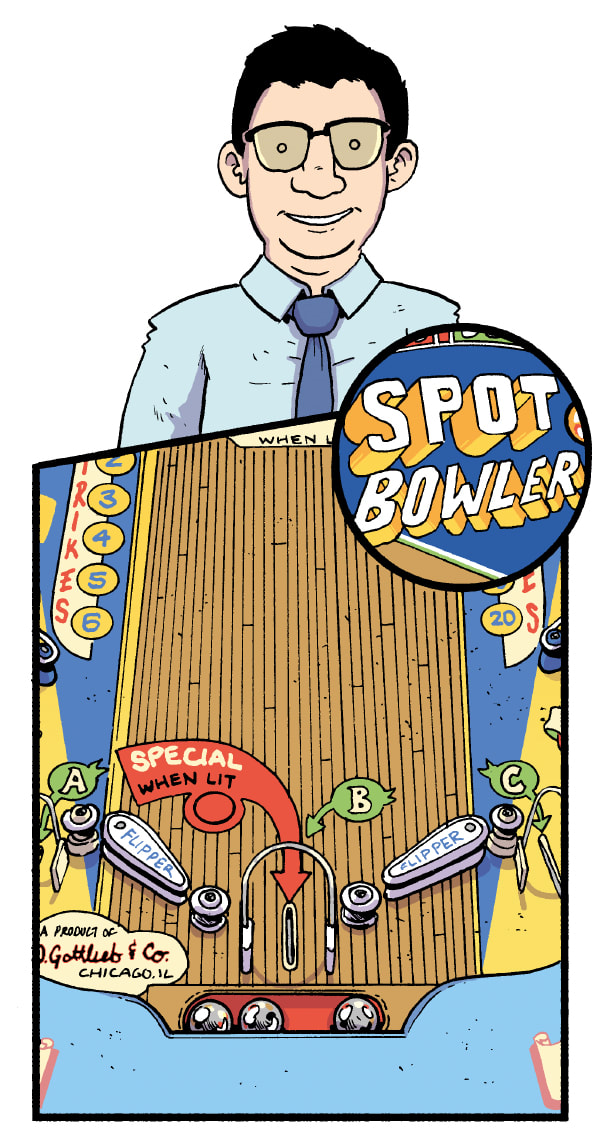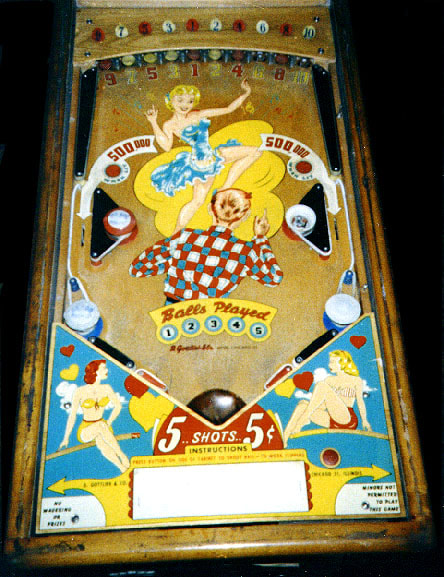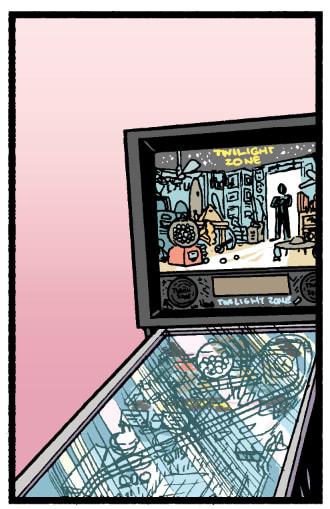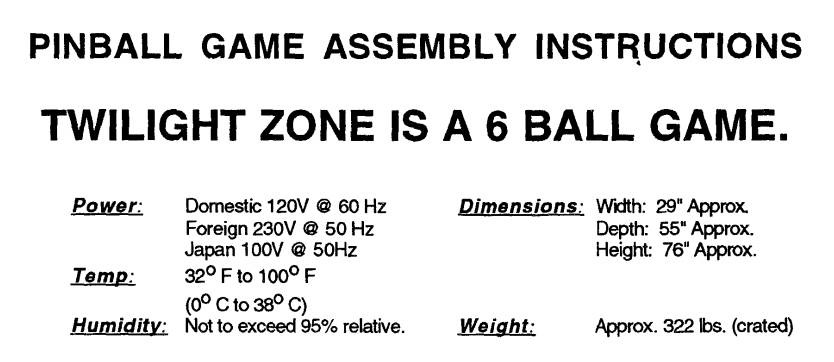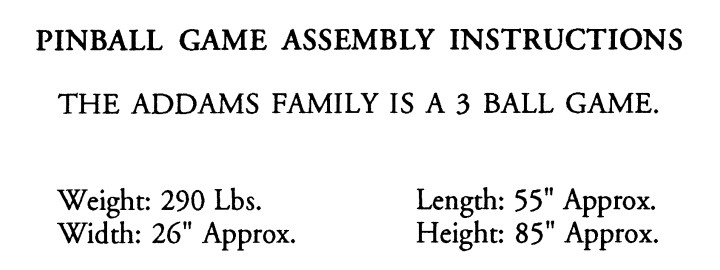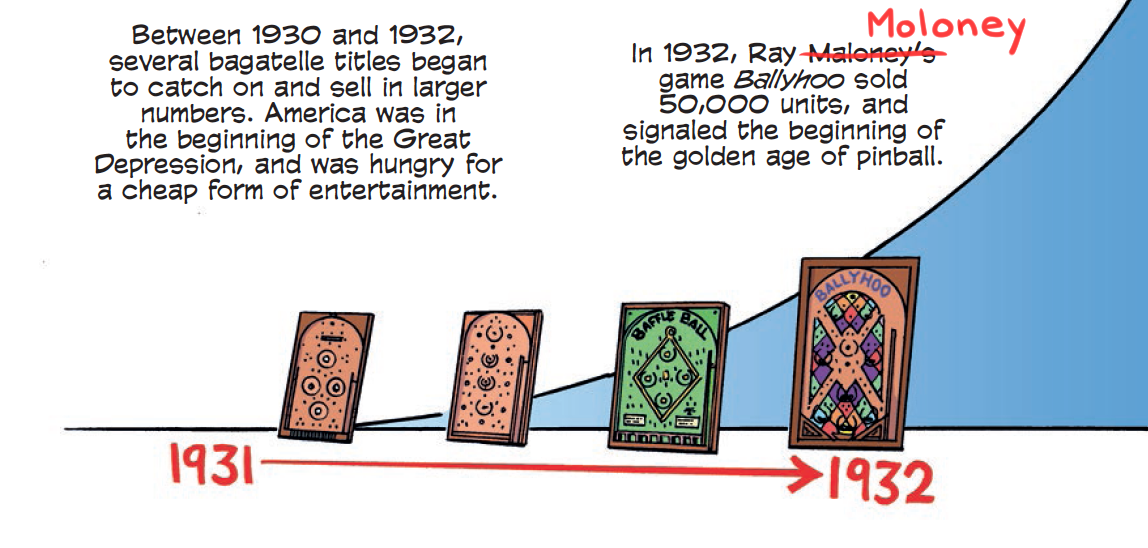As I was working on my book, Pinball: A Graphic History of the Silver Ball, I did my best to use as many print and primary sources that I could during the research. It was exciting to comb through pinball's history and talk to people about their experiences. However, I found pinball's history, at times, to be pretty labyrinthine, especially in its relative infancy. A couple people have reached out to me to point out some inaccuracies in my book. I'm really grateful to those that reached out to me to help me understand pinball's story! If you find something that could use clarification, please do not hesitate to reach out!
1) Roger Sharpe's Tie
I have learned since the publication of the book that while I colored Roger Sharpe's tie red during his famous testimony in front of the New York City Council in 1976 it was in fact NAVY BLUE! I know that this seems like a moot point, but this testimony is a big deal in the history of pinball, and I endeavor for it to be as true-to-life as possible. (This correction was brought to my attention by Joe Ciaravino. Thank you, Joe!)
I have learned since the publication of the book that while I colored Roger Sharpe's tie red during his famous testimony in front of the New York City Council in 1976 it was in fact NAVY BLUE! I know that this seems like a moot point, but this testimony is a big deal in the history of pinball, and I endeavor for it to be as true-to-life as possible. (This correction was brought to my attention by Joe Ciaravino. Thank you, Joe!)
(Image recoloring done by Joe Ciaravino based on a conversation with the man himself, Roger Sharpe)
2) Early Tilt Mechs
In my section about tilt mechanisms, I follow Harry Williams as he tried various non-electronic means to physically stop people from tilting pinball machines (putting nails on the bottom of the machine or filling the machine with sand so it would be too heavy to move). I eventually presented Williams's solution in the form of an electronic tilt device called a Stool Pigeon. Reading the book back, I can see how it reads as if I'm saying that Williams invented the first tilt-indicating device, and that simply isn't true.
There are a number of machines that have non-electronic methods of indicating that a player has tilted. For instance, 1933's Jigsaw had a mechanical device that when triggered, would flip over a panel that revealed the word "tilted." I even found an example earlier than that! In 1905, there was a German coin-operated slingshot game that had a curtain that would fall if you moved the machine too much! Sure, slingshot game wasn't a pingame, but the designers were trying to solve the same problem.
(This correction was brought to my attention by Dan Miller. Thank you, Dan! Dan also directed me to THIS THREAD about early tilt mechanisms in coin-operated games, and it's extremely interesting!)
In my section about tilt mechanisms, I follow Harry Williams as he tried various non-electronic means to physically stop people from tilting pinball machines (putting nails on the bottom of the machine or filling the machine with sand so it would be too heavy to move). I eventually presented Williams's solution in the form of an electronic tilt device called a Stool Pigeon. Reading the book back, I can see how it reads as if I'm saying that Williams invented the first tilt-indicating device, and that simply isn't true.
There are a number of machines that have non-electronic methods of indicating that a player has tilted. For instance, 1933's Jigsaw had a mechanical device that when triggered, would flip over a panel that revealed the word "tilted." I even found an example earlier than that! In 1905, there was a German coin-operated slingshot game that had a curtain that would fall if you moved the machine too much! Sure, slingshot game wasn't a pingame, but the designers were trying to solve the same problem.
(This correction was brought to my attention by Dan Miller. Thank you, Dan! Dan also directed me to THIS THREAD about early tilt mechanisms in coin-operated games, and it's extremely interesting!)
3) The Origin of the 2-Flipper Placement
In the chapter about flippers in the book, I look at the evolution of how we got from six flippers configuration in 1947's Humpty Dumpty to the 2-flippers-at-the-bottom configuration that we've seen in almost every game from the last 50 years. In the book, I indicate Wayne Neyens 1950 game Spot Bowler as the first game that put the flippers in the current 2-flipper configuration we know today. While it is the first pinball game to have the flippers there, it isn't the first coin-operated game with flippers to have 2 flippers in that configuration.
Earlier in 1950, Harry Mabs designed Just 21, a turret shooting game that had 2 flippers at the bottom, facing towards each other. This game is sometimes omitted from pinball's chronology because it is a turret game and not a pingame, but I agree that it's worth noting that Harry Mabs technically utilized that flipper layout in a coin-op game first. (This correction was brought to my attention by Dan Miller. Thank you, Dan!)
In the chapter about flippers in the book, I look at the evolution of how we got from six flippers configuration in 1947's Humpty Dumpty to the 2-flippers-at-the-bottom configuration that we've seen in almost every game from the last 50 years. In the book, I indicate Wayne Neyens 1950 game Spot Bowler as the first game that put the flippers in the current 2-flipper configuration we know today. While it is the first pinball game to have the flippers there, it isn't the first coin-operated game with flippers to have 2 flippers in that configuration.
Earlier in 1950, Harry Mabs designed Just 21, a turret shooting game that had 2 flippers at the bottom, facing towards each other. This game is sometimes omitted from pinball's chronology because it is a turret game and not a pingame, but I agree that it's worth noting that Harry Mabs technically utilized that flipper layout in a coin-op game first. (This correction was brought to my attention by Dan Miller. Thank you, Dan!)
4) The Size of Twilight Zone
In chapter 5, I look at pinball in the 90's and all the incredible innovations and successes that came from that era. Naturally, I look at one of the most successful pinball games ever; Twilight Zone. In the book, I cite that Twilight Zone is 6" wider than a normal pinball machine. In reality, Twilight Zone is ~2.75" wider than a normal game. Twilight Zone is an absolutely PACKED game, so it feels gigantic, but I just mixed up some numbers. (This correction was brought to my attention at the Golden State Pinball Festival by Chris Kuntz. Thank you, Chris! We had an amazing conversation at GSPF where he told me the history of Data East's end-of-stroke switch, which was completely enthralling!)
In chapter 5, I look at pinball in the 90's and all the incredible innovations and successes that came from that era. Naturally, I look at one of the most successful pinball games ever; Twilight Zone. In the book, I cite that Twilight Zone is 6" wider than a normal pinball machine. In reality, Twilight Zone is ~2.75" wider than a normal game. Twilight Zone is an absolutely PACKED game, so it feels gigantic, but I just mixed up some numbers. (This correction was brought to my attention at the Golden State Pinball Festival by Chris Kuntz. Thank you, Chris! We had an amazing conversation at GSPF where he told me the history of Data East's end-of-stroke switch, which was completely enthralling!)
5) Misspelling Ray Moloney's Name
This one really stung. Ray Moloney was the man who founded Bally in the 1930's. He was also a game designer who is maybe best known for creating Ballyhoo. The importance of Ballyhoo can't be understated. Selling 50,000 copies, it set a record that has not been topped by any other pinball title. I got my wires crossed and spelled Ray Moloney's last name "Maloney."
This one really stung. Ray Moloney was the man who founded Bally in the 1930's. He was also a game designer who is maybe best known for creating Ballyhoo. The importance of Ballyhoo can't be understated. Selling 50,000 copies, it set a record that has not been topped by any other pinball title. I got my wires crossed and spelled Ray Moloney's last name "Maloney."
(This correction was brought to my attention by Ray Moloney's daughter, Donna Rae Moloney Galvin. Thank you, Donna!)

